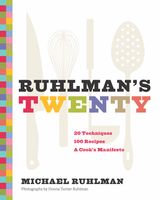Label
All
0
Clear all filters
The Expansive Egg White
Appears in
Published 2011
If you like to experiment with food, nothing is more fun than messing around with eggs, and one of the best things to mess with is the egg white. The ability of this combination of proteins and water to trap air is its most dramatic use. Other, more subtle uses, such as the impact of the egg white on a cocktail or its ability to give solidity to a fish or chicken purée, should not be overlooked.
The primary characteristic to know about an egg white is that it has two components: a thin watery part and a thick cohesive part. The thin watery part is what swirls away when you poach an egg (it doesn’t matter how much vinegar you put in the water, a common practice I don’t recommend). To avoid the unsightly flurry of loose egg white in poaching water, Harold McGee, an authority on the science of cooking, suggests pouring the egg into a large slotted spoon to allow the loose white to fall off, leaving only the viscous part of the white and, as a result, a prettier poached egg. It’s a great technique.
Become a Premium Member to access this page
Unlimited, ad-free access to hundreds of the world’s best cookbooks
Over 160,000 recipes with thousands more added every month
Recommended by leading chefs and food writers
Powerful search filters to match your tastes
Create collections and add reviews or private notes to any recipe
Swipe to browse each cookbook from cover-to-cover
Manage your subscription via the My Membership page
Monthly plan
Annual plan
In this section
Part of
Advertisement
Advertisement
The licensor does not allow printing of this title


